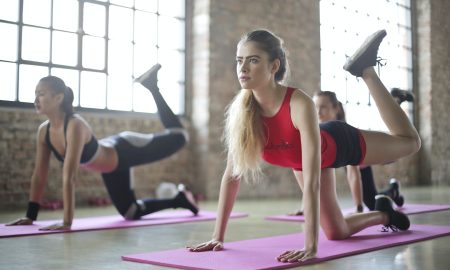
Are you in the market for a new pair of running shoes? Finding the perfect running shoes can be a daunting task. With so many brands and styles available, it’s hard to narrow down the options and make the best choice for your feet. Whether you’re an experienced runner or just starting out, choosing the right running shoes is essential for comfort, performance, and injury prevention. This article will discuss expert tips for choosing the right running shoes to help you make the best decision for your needs. Let’s get to the list.
Know Your Foot Type
One of the main tips for choosing the right running shoes is to know your foot type. This will help you determine the shoe type most suitable for your foot shape and size. As a general rule, if you have low arches or flat feet, a stability shoe with some cushioning is best. A more supportive and cushioned shoe is recommended if you have high arches.
Knowing your foot type lets you narrow down your choices and gives you an idea of the kind of cushioning, arch support, and stability you require. For instance, you won’t need breaking in running shoes if you choose the perfect fit for your feet. You will have perfectly fitting shoes from the moment you slip them on. Ensure that the shoes fit snugly but not too tightly.
Know Your Goals
Another important factor to consider when choosing running shoes is your fitness goals. Are you looking for a lightweight option to hit the treadmill or trail? Or are you looking for something with more cushioning and stability if you’re going on long runs? Knowing your goals will help you narrow down the type of running shoe that’s most suitable for your needs.
Before hitting the market, it is essential to sit down and define your goals as a runner. This will help you determine the features and qualities that are most important for your desired pair of shoes. You can also ask your local running store for advice on the best type of shoes to suit your needs. For instance, if you live in a hot climate, you may want to consider lightweight running shoes with good ventilation.
Consider the Underfoot Cushioning
The cushioning in the sole of your shoes is also an important factor when choosing running shoes. You want something with enough cushioning to provide comfort and protect your feet while still allowing you to feel the terrain beneath you. Generally, lightweight running shoes have less cushioning than their more supportive counterparts, but they can still provide enough shock absorption.
Ensure that the cushioning is not too stiff or squishy. It should be able to provide enough protection for your feet without compromising the ability to feel the ground beneath you. This will help you maintain good form and keep your joints healthy over time. For instance, stiffer cushioning is better suited for trail running, while squishier cushioning works well for road running.
Check Your Wear Patterns
It’s important to check the wear patterns on your existing running shoes. This will give you an idea of the cushioning, support, and stability level that works best for your feet. If the wear patterns indicate excess pressure on certain areas of your foot, this could signify that you need more cushioning or arch support.
On the other hand, if the outer edges of the midsole show wear, this could signify that you need more stability or motion control. Checking the wear patterns can also help you determine how much cushioning is enough for your feet. Before purchasing a new pair of shoes, you can check your previous pair of shoes for any signs of wear and tear.
Test It Out
Once you have narrowed down your options, it is important to test the shoes for fit and comfort. Though it may be tempting to buy online, we recommend trying them first before making a purchase. See how they feel on your feet, walk around in them, and try running a few strides on an incline to assess the fit.
It is also important to check for any pressure points or tightness around your toes, heel, midsole, and upper. Make sure that you have enough room in the toe box for your feet to move freely but don’t get too much space either, as this can affect your stability. With the right pair of shoes, you should be able to run comfortably and confidently.
Brand
Brand matters a lot when it comes to running shoes. Different brands have different features and technologies that can significantly impact your performance. It is important to research the various options available in the market from well-known running shoe brands before making a purchase.
By doing so, you will be able to get an idea of the type of cushioning, support, and stability offered by each brand. This will help you find the perfect pair of shoes that is best suited to your running goals. Some of the well-known brands include Nike, Adidas, and Asics. All these and more have a wide range of products for all types of runners.
Price
Price is another important factor to consider when choosing running shoes. If you’re on a budget, look for shoes that provide value for money without compromising on quality or features. It is also important to remember that more expensive doesn’t always mean better; sometimes, cheaper options can offer the same level of quality as more expensive options.
However, comparing prices and features is important to ensure you get the best bang for your buck. As a general rule of thumb, we recommend investing in a pair of shoes with good cushioning, arch support, and stability that will last you several miles. You shouldn’t compromise on quality to save a few bucks. For instance, you shouldn’t buy cheaper shoes with lesser cushioning because they will cause more harm to your body in the long run.
Choosing the right running shoes is essential for a successful and comfortable run. Before making a purchase, it is important to consider factors such as cushioning, support, stability, wear patterns, fit, brand, and price. By following the tips in this article and researching your options thoroughly, you can find the perfect pair of running shoes to help you reach your goals. Happy shopping!


















Follow Us